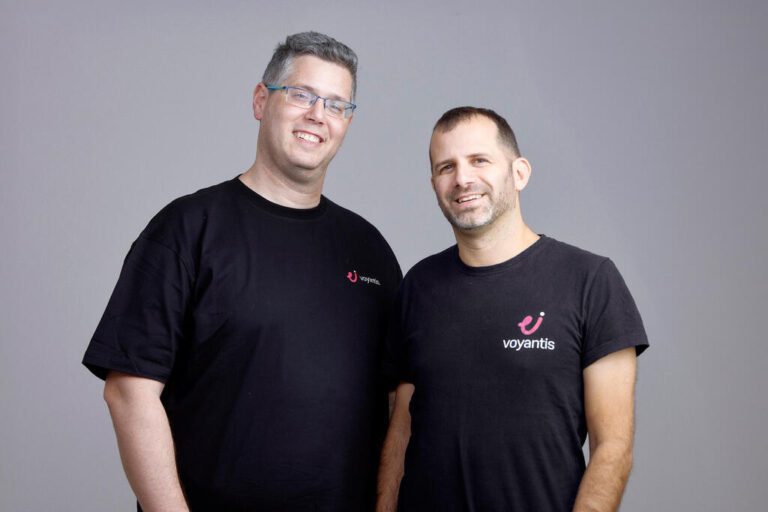Latest Post

The French startup, Mantle8, has emerged successful in a seed funding round worth €3.4 million, which it will use to push forward with its pioneering exploration of natural hydrogen. The round was led by Kiko Ventures and Breakthrough Energy Ventures Europe (BEV-E), in addition to prominent angel investors, which shows an increased interest in sustainable energy solutions and the prospects of natural hydrogen as a clean alternative to fossil fuels.
Founded in 2024, Mantle8 is at the forefront of a new wave of geologists aiming to revolutionize energy sourcing with the location of the Earth’s natural reservoirs of hydrogen. Decades of geological expertise will be used as the foundation, and innovative exploration techniques will be leveraged to deliver natural hydrogen to the world.
Hydrogen is recognized for its high energy content, holding three times more energy per kilogram than gasoline, and its combustion results in zero carbon dioxide emissions, making it an ideal clean fuel. However, traditional methods of hydrogen production, such as electrolysis powered by renewable energy sources, remain costly and energy-intensive. Mantle8 aims to overcome these challenges by tapping into the Earth’s natural hydrogen production processes.
Each year, millions of tons of hydrogen are produced by the reaction of water and iron-rich rocks through a process called serpentinization. It is just below our feet, an enormous, untapped resource. Mantle8 proprietary technology combines geology, geophysics, and geochemistry data to generate highly accurate predictive models for the detection of natural hydrogen.
Their multiphysics imaging technology allows them to image the entire hydrogen-generating system to assess the quantity and quality of hydrogen. This will help Mantle8 identify the best natural hydrogen reservoirs and target hydrogen production at a projected cost of $0.80 per kilogram-a price point that could revolutionize the clean energy market.
Read also: CargoBeamer Raises €65M to expand sustainable rail freight across Europe.
Mantle8’s Exploration Framework
Mantle8’s exploration strategy is based on what they call the “Geological Trifecta,” a model that identifies three conditions of geology that must be met to have economically viable natural hydrogen extraction:
- Source Rock: Iron-rich mantle rocks are best suited for serpentinization, the natural process responsible for hydrogen generation.
- Reservoirs: The source rock must be connected to shallow reservoirs through natural fractures, allowing the generated hydrogen to accumulate.
- Replenishment: The most productive reservoirs are those that are continually replenished, being connected to particularly active “kitchens” where hydrogen is consistently produced.
By focusing on these conditions, Mantle8 aims to halve the project development time for natural hydrogen exploration, resulting in significant cost savings and accelerated deployment of this clean energy source.
Read also: Lydian Labs: Transforming CO₂ and Electricity into Sustainable Aviation Fuel
The Growing Interest in Natural Hydrogen
Mantle8’s successful funding round is indicative of a broader surge in interest surrounding natural hydrogen, often referred to as “white” or “gold” hydrogen. Unlike hydrogen produced through industrial processes, natural hydrogen is generated through geological phenomena such as serpentinization and radiolysis. Recent advancements in detection technologies have made it possible to identify and quantify these underground hydrogen deposits more accurately.
To date in 2023, it was estimated that over 40 firms worldwide were in the exploration hunt for natural deposits of hydrogen, compared to around 10 such firms in 2020. Exploratory work is taking place in many countries including United States, Australia, Spain, France, Albania, Colombia, South Korea and Canada.
Natural hydrogen’s main selling point is cost competitiveness. While Canada-based company Hydroma produces white hydrogen at an estimated $0.50 per kilogram, project costs in Spain and Australia expect to reach an approximate $1 per kilogram, making the white hydrogen very competitive in price.
Read also: Hydrobox Secures $9M to Expand Hydro-Powered Mini-Grids in Kenya
Challenges and Considerations of Natural Hydrogen Extraction
While the prospects of natural hydrogen are promising, several challenges must be addressed to realize its full potential:
- Environmental Impact: The extraction of natural hydrogen must be conducted responsibly to minimize ecological disruption. Understanding the environmental impacts of hydrogen extraction is crucial, as highlighted by researchers exploring natural hydrogen sources in Greenland. They emphasize the need for thorough scientific investigation before large-scale harvesting to prevent unintended consequences.
- Technological Development: Drilling technologies and subsurface imaging have to be developed to locate hydrogen deposits efficiently. Companies like Gold Hydrogen are making progress in this area. For instance, the company has recently drilled into South Australia and detected hydrogen at shallow depths.
- Regulatory Frameworks: Clear exploration and production regulatory frameworks and standards for natural hydrogen are essential aspects of safety and environmental stewardship. Governments around the world – such as those in France and the United States – have vowed to provide money to speed exploration and extraction efforts for naturally occurring hydrogen, representing a growing interest in the source.
Read also: Shift4Good Closes €220M Fund to Propel Sustainable Transportation Innovations
Path Forward for Mantle8
With the recent funding, Mantle8 is going to:
- Pilot Technological Initiatives: Implement a pilot technology to image and quantify systems of hydrogen underground, further cementing their model of exploration
- Scalability: Develop further the cross border scalability of this technology to probe and explore naturally occurring hydrogen stores around the globe
- Scale and Expand Expertise: Hire newer AI and Geochemistry experts as part of team expansion to get their predictive model and exploration even more precise.
Mantle8 will find 10 million tons of natural hydrogen by 2030, in-line with the European Union’s production and importation of the same amount of hydrogen produced from renewable energy sources by that time.








